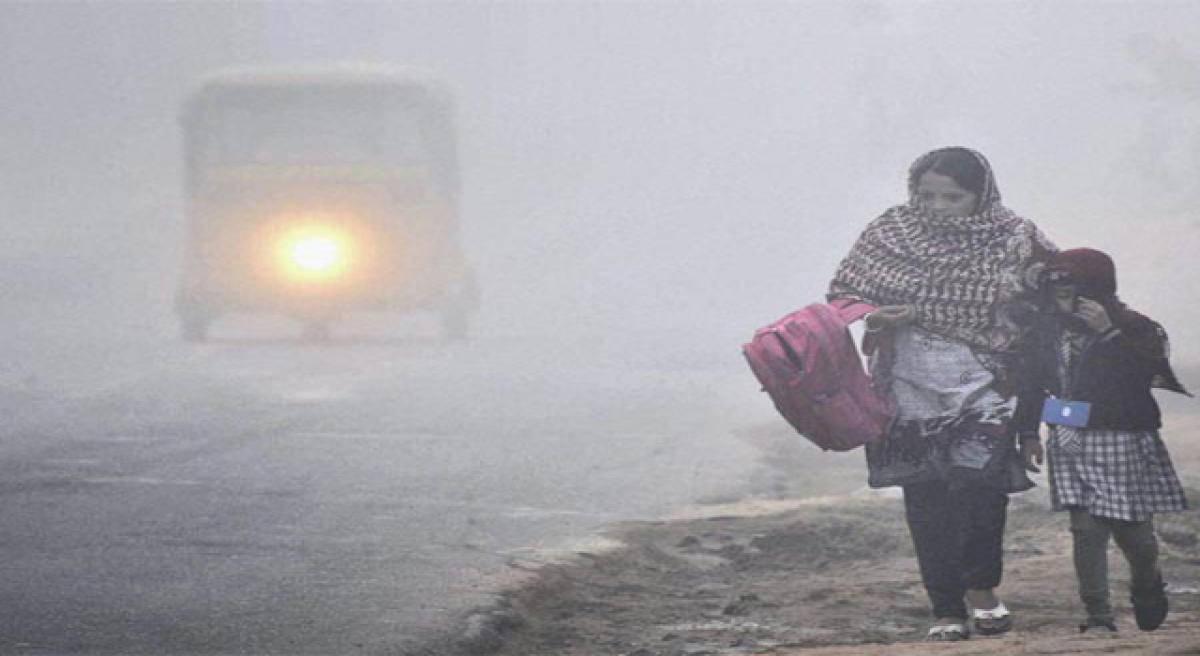Live
- ‘Get Set, Grow Summit 2024’ Focuses on Digital Detox for Families
- Stokes motivates his team to put in extra effort, says England pacer Potts
- From overcoming setbacks to leading India in U19 Women’s Asia Cup, Niki Prasad's amazing journey
- Driving Enterprise Security: Inside Venkata Reddy Thummala’s Leadership Journey
- Constitution debate: PM Modi hails 'Nari Shakti'; makes strong pitch for 'United Bharat’
- Abhijeet Bhardwaj: Revolutionizing Enterprise Analytics with Innovation and Expertise
- Bihar: Inquiry initiated against principal who went to buy veggies during school hours
- Press Sri Lankan Prez for release of Indian fishermen: TN Cong MP to EAM Jaishankar
- TN: DMK postpones executive meet due to heavy rains & Parliament session
- Porous silicon oxide electrodes can fix durability issues in batteries: Researchers
Just In

Deep forests surrounding the city complemented by emission control measures provide the complete answer to Delhi\'s air pollution. The city\'s levels of air pollution are once again as dangerous as they are unrelenting.
Deep forests surrounding the city complemented by emission control measures provide the complete answer to Delhi's air pollution. The city's levels of air pollution are once again as dangerous as they are unrelenting. Everyone is affected -- the rich and powerful as well as the poor and vulnerable. The new High Level Committee set up by the central government with the state Chief Secretary as a Member may soon usher in a well-organised and tangibly effective programme in an attempt to resolve this deadly problem.
Delhi's air pollution problem arises from vehicular emissions, burning of cooking gas, farmers burning husk in expanded farm lands outside the city and, above all, massive dust storms from across West Asia, Pakistan, Rajasthan and the Thar desert. Analysis of three-year data (2013-2015) on particulate air pollution (PM 2.5) in Delhi gathered by the Central Pollution Control Board from 10 different locations in the city reveals a systematic wave-like pattern: Air pollution peaks every winter from October to January.
My published research has now quantitatively established that the flaring up of air pollution in Delhi in winter is due to an unusual seasonal climate change effect -- resulting from a peculiar combination of ambient air temperature and dew point -- that amplifies the pollutant particulate density to dangerous levels in winter by a factor of seven.
In other words, if the "air quality index" (AQI) is now, say, 350 micrograms per cubic meter, the actual density of pollutants -- carbon, dust, rubber particles, etc -- will be a well-tolerable 50! This "weather factor" which amplifies AQI in Delhi is lower in the summer and rainy seasons when the Delhi air is washed clean by rainfall.
How then does one address this environmentally overwhelming "weather factor"? The fundamental cure (complementing other technical and administrative measures proposed) is to surround Delhi with a deep ring of forests. Not only will this modify the weather within the city, but the forest will absorb a major portion of airborne dust from across the Thar Desert and from Pakistan that further adds to air pollution levels in the capital city.
I recall much more forested areas in and around Delhi in the 1940s. Forests have been replaced by large dense populations, thermal power plants, cars, auto rickshaws and scooters/motorcycles. Without afforestation, even if you take all cars off road or all millions of cars and auto-rickshaws are made electric, it would just scratch the surface of Delhi's air pollution problem.
In my opinion, unless this huge climate-driven air pollution amplification factor and other dust-driven environmental conditions is addressed comprehensively by afforestation, the cost and efforts made by the government will give little relief and large numbers of people living in Delhi will continue to suffer from respiratory ailments.
A massive afforestation programme may take 10 years to implement and call for new land laws in several states surrounding the capital. So the earlier the newly set-up High Level Committee comes around to including afforestation as number one priority in its action plan, the better it is for the people living in Delhi. After all, one cannot have a Swach Bharat without a Swach Delhi!
Several enabling new and advanced technologies have already been fully developed and extensively certified in India to eliminate vehicular pollution. Besides, many courses of action are being discussed to stop the annual burning of dry paddy stubs by neighbouring states in winter.
This situation in the capital of India is indeed a case for enlightened people to come forward and address the problem collectively and consistently for at least seven to ten years, unaffected by changing political fortunes, for a tangible impact to be felt.
Solutions here could soon be replicated all over India. For if not, as a philosopher said, "When you lose your relationship with nature and the vast heavens, you lose your relationship with man". (Hyderabad-based R Gopalaswami is a retired aerospace systems analyst and former CMD of Bharat Dynamics Ltd. He can be contacted at [email protected])
By R Gopalaswami

© 2024 Hyderabad Media House Limited/The Hans India. All rights reserved. Powered by hocalwire.com







